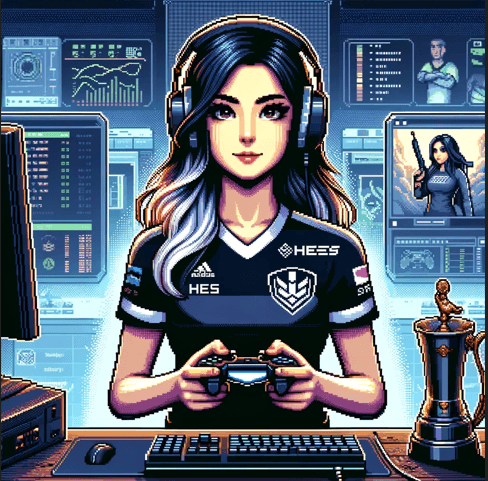 Let’s dive into Overall Game Impressions. Stray, developed by BlueTwelve Studio and published by Annapurna Interactive, feels fresh. Steam users love its neon-lit alleys and detailed graphics. For instance, one review called each frame a potential wallpaper. Meanwhile, another praised the meow interactions that make robots stare or cameras nod. As a pro gamer, I value how every mechanic feels sharp and intentional. Notably, the game blends indie charm with AAA-level polish, creating an experience that resonates with both casual and hardcore audiences. Ultimately, Stray stands out by making feline agility central to its identity, offering a unique gameplay feel in a market saturated with humanoid protagonists.
Let’s dive into Overall Game Impressions. Stray, developed by BlueTwelve Studio and published by Annapurna Interactive, feels fresh. Steam users love its neon-lit alleys and detailed graphics. For instance, one review called each frame a potential wallpaper. Meanwhile, another praised the meow interactions that make robots stare or cameras nod. As a pro gamer, I value how every mechanic feels sharp and intentional. Notably, the game blends indie charm with AAA-level polish, creating an experience that resonates with both casual and hardcore audiences. Ultimately, Stray stands out by making feline agility central to its identity, offering a unique gameplay feel in a market saturated with humanoid protagonists.
Overall Impression
 I agree. BlueTwelve’s small French team—mostly cats—nailed exploration. In fact, their team once said they wanted players to feel like curious cats. Right away, the atmosphere hooks me. Additionally, I respect how Annapurna supports smaller studios with creative freedom. That trust, in turn, results in bold design choices that emphasize mood and character over exposition. Consequently, the result is a game that feels handcrafted, intimate, and artistically expressive without losing direction or coherence.
I agree. BlueTwelve’s small French team—mostly cats—nailed exploration. In fact, their team once said they wanted players to feel like curious cats. Right away, the atmosphere hooks me. Additionally, I respect how Annapurna supports smaller studios with creative freedom. That trust, in turn, results in bold design choices that emphasize mood and character over exposition. Consequently, the result is a game that feels handcrafted, intimate, and artistically expressive without losing direction or coherence.
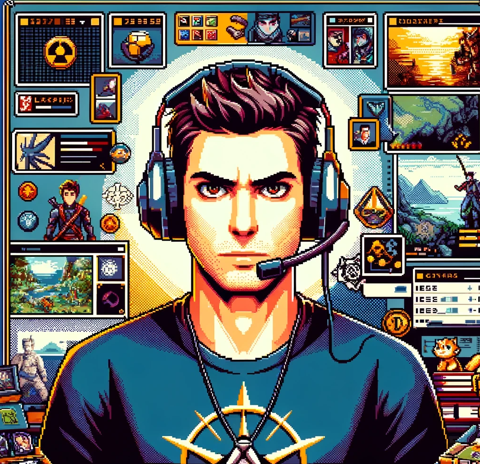 I loved that. Collectibles hide in every corner of the cybercity. Moreover, Stray tracks side quests clearly. As one user pointed out, grabbing every token felt super worth it. I finished 100% and felt truly accomplished. Impressively, the trophies feel organically integrated into exploration, not tacked on. Unlocking hidden memories or completing fetch quests never felt like filler—rather, they added context to the city’s fall and its robotic inhabitants.
I loved that. Collectibles hide in every corner of the cybercity. Moreover, Stray tracks side quests clearly. As one user pointed out, grabbing every token felt super worth it. I finished 100% and felt truly accomplished. Impressively, the trophies feel organically integrated into exploration, not tacked on. Unlocking hidden memories or completing fetch quests never felt like filler—rather, they added context to the city’s fall and its robotic inhabitants.
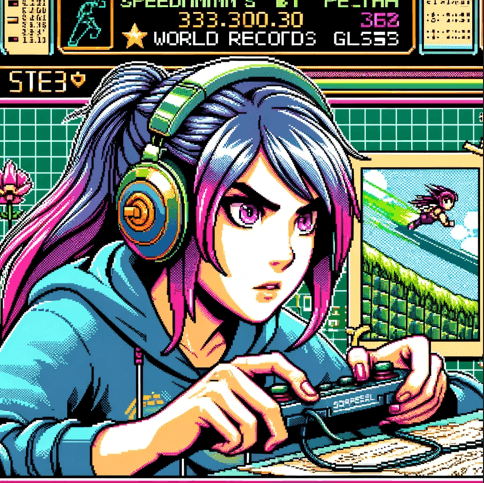 From a speedrunner’s view, Stray’s design rewards precision. The cat’s movement feels weightless. For example, you can bunny-hop off walls to save seconds. Its level design offers multiple paths, which is gold for speedruns. Better yet, the layout accommodates route optimization, and movement exploits are balanced so that mastery feels earned. Furthermore, split timers benefit from clever vertical traversal and well-placed triggers that make reruns thrilling and technical.
From a speedrunner’s view, Stray’s design rewards precision. The cat’s movement feels weightless. For example, you can bunny-hop off walls to save seconds. Its level design offers multiple paths, which is gold for speedruns. Better yet, the layout accommodates route optimization, and movement exploits are balanced so that mastery feels earned. Furthermore, split timers benefit from clever vertical traversal and well-placed triggers that make reruns thrilling and technical.

Gameplay Mechanics
 The controls marry stealth with agility. You swipe to climb pipes, tap to dash, and meow to distract robots. Comparatively, it reminds me of Mirror’s Edge meets Little Nightmares. It pushes the genre by letting you interact with tiny details—like knocking cans to lure enemies. Because of that, the sense of physicality turns the environment into a playground, rewarding curiosity and light experimentation.
The controls marry stealth with agility. You swipe to climb pipes, tap to dash, and meow to distract robots. Comparatively, it reminds me of Mirror’s Edge meets Little Nightmares. It pushes the genre by letting you interact with tiny details—like knocking cans to lure enemies. Because of that, the sense of physicality turns the environment into a playground, rewarding curiosity and light experimentation.
 Additionally, the environmental puzzles use simple items—trash cans, water pipes, even remote drones. B-12’s hacking skill opens doors or fixes bots. That duo, therefore, feels like a living toolset. I loved using a bottle to weigh down a switch. Altogether, the puzzles strike a satisfying balance between logic and intuition, encouraging players to see utility in everyday objects.
Additionally, the environmental puzzles use simple items—trash cans, water pipes, even remote drones. B-12’s hacking skill opens doors or fixes bots. That duo, therefore, feels like a living toolset. I loved using a bottle to weigh down a switch. Altogether, the puzzles strike a satisfying balance between logic and intuition, encouraging players to see utility in everyday objects.
 Every interactive element hides a secret. For example, I found hidden fiber string for upgrades and lore logs in crates. These collectibles tie directly to world-building. As a result, they give more context to the decaying city. Scanning murals or chatting with reclusive robots opens optional stories that deepen emotional stakes and reward exploration.
Every interactive element hides a secret. For example, I found hidden fiber string for upgrades and lore logs in crates. These collectibles tie directly to world-building. As a result, they give more context to the decaying city. Scanning murals or chatting with reclusive robots opens optional stories that deepen emotional stakes and reward exploration.
 At one point, I spotted a shortcut through a broken ceiling vent. Interestingly, you can skip the long corridor in under five seconds once you learn the trick. These kinds of clever bypasses encourage players to replay chapters, refine techniques, and compare routes, which is ideal for speed challenges.
At one point, I spotted a shortcut through a broken ceiling vent. Interestingly, you can skip the long corridor in under five seconds once you learn the trick. These kinds of clever bypasses encourage players to replay chapters, refine techniques, and compare routes, which is ideal for speed challenges.

Story & Narrative
 Stray’s plot hooks you from frame one. You start lost, alone, with no tutorial text. Gradually, discovering lore through rusted terminals and cat-chatter felt immersive. BlueTwelve Studio said they aimed for wordless storytelling. As such, this approach creates natural intrigue—players aren’t told what’s happening, they infer it, just like a curious animal would.
Stray’s plot hooks you from frame one. You start lost, alone, with no tutorial text. Gradually, discovering lore through rusted terminals and cat-chatter felt immersive. BlueTwelve Studio said they aimed for wordless storytelling. As such, this approach creates natural intrigue—players aren’t told what’s happening, they infer it, just like a curious animal would.
 Every twist felt earned. Befriending B-12 adds genuine emotion. The pacing is steady—no forced cutscenes. Instead, you piece together history at your own pace. The friendship between the cat and drone grows subtly, creating a rare emotional bond without overwrought dialogue or exposition.
Every twist felt earned. Befriending B-12 adds genuine emotion. The pacing is steady—no forced cutscenes. Instead, you piece together history at your own pace. The friendship between the cat and drone grows subtly, creating a rare emotional bond without overwrought dialogue or exposition.
 Dialogue quality is high. Even though robots speak in clicks and whistles, subtitles portray humor and tension. Impressively, I never felt the story drag, even at 100%. The minimalist writing approach keeps scenes focused and clean. Each robot has a distinct personality that comes through even in short exchanges.
Dialogue quality is high. Even though robots speak in clicks and whistles, subtitles portray humor and tension. Impressively, I never felt the story drag, even at 100%. The minimalist writing approach keeps scenes focused and clean. Each robot has a distinct personality that comes through even in short exchanges.
 Importantly, the story doesn’t block your speedrun flow. It balances narrative moments with skill challenges. You set your own tempo. Optional cutscene skips and minimal dialogue interruptions make routing faster and more strategic.
Importantly, the story doesn’t block your speedrun flow. It balances narrative moments with skill challenges. You set your own tempo. Optional cutscene skips and minimal dialogue interruptions make routing faster and more strategic.
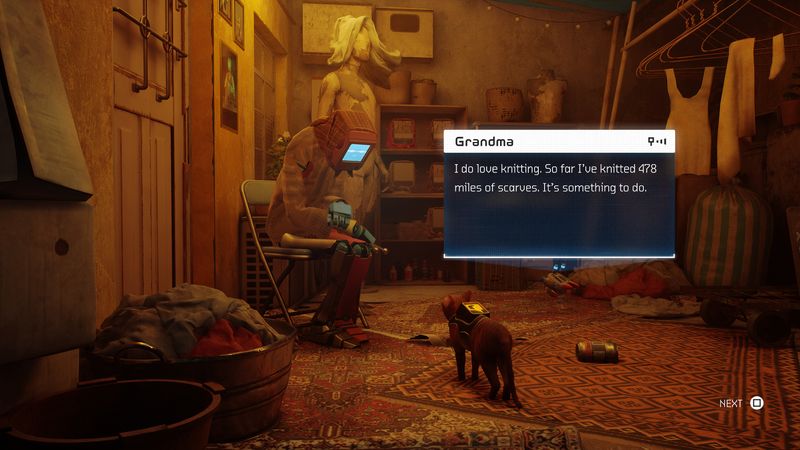
Visuals & Graphics
 Stray runs on Unreal Engine 4, which powers its neon glow and detailed textures. Consequently, character models feel alive. The art team cited Blade Runner and Studio Ghibli as inspirations. That influence is clear in the way technology and nature blend, evoking a sense of faded wonder.
Stray runs on Unreal Engine 4, which powers its neon glow and detailed textures. Consequently, character models feel alive. The art team cited Blade Runner and Studio Ghibli as inspirations. That influence is clear in the way technology and nature blend, evoking a sense of faded wonder.
 Furthermore, the color palette shifts from cold alleys to warm workshop interiors. This visual contrast highlights mood changes. Animations flow smoothly on both PlayStation and PC. For example, I hit a steady 60 FPS on my build. Additionally, the lighting effects and environmental shaders stand out, enhancing immersion without sacrificing performance.
Furthermore, the color palette shifts from cold alleys to warm workshop interiors. This visual contrast highlights mood changes. Animations flow smoothly on both PlayStation and PC. For example, I hit a steady 60 FPS on my build. Additionally, the lighting effects and environmental shaders stand out, enhancing immersion without sacrificing performance.
 The attention to detail wowed me. Tiny wires, flickering holo signs, and fur physics make revisiting areas rewarding. Even graffiti has variation, and you’ll notice how certain scenes subtly evolve based on quest progression or environmental decay.
The attention to detail wowed me. Tiny wires, flickering holo signs, and fur physics make revisiting areas rewarding. Even graffiti has variation, and you’ll notice how certain scenes subtly evolve based on quest progression or environmental decay.
 Best of all, fast transitions don’t drop frames. Loading times stay under five seconds, which matters for chained speedruns. This seamlessness makes stage resets and retries efficient, keeping the pace fluid for practice or leaderboard attempts.
Best of all, fast transitions don’t drop frames. Loading times stay under five seconds, which matters for chained speedruns. This seamlessness makes stage resets and retries efficient, keeping the pace fluid for practice or leaderboard attempts.
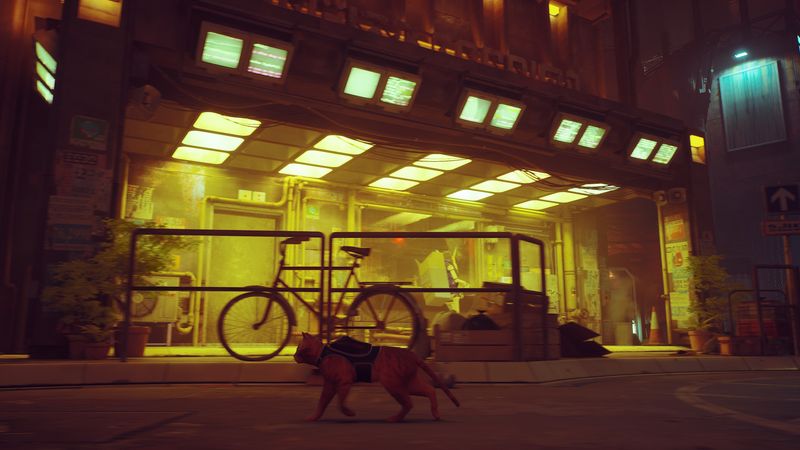
Audio & Sound Design
 The soundtrack blends ambient synth with subtle piano. Notably, tracks like “Neon Alley” build tension in stealth sections. It won me over completely. Composer Yann Van Der Cruyssen brings a haunting melancholy to the music that mirrors the loneliness and curiosity of your feline protagonist.
The soundtrack blends ambient synth with subtle piano. Notably, tracks like “Neon Alley” build tension in stealth sections. It won me over completely. Composer Yann Van Der Cruyssen brings a haunting melancholy to the music that mirrors the loneliness and curiosity of your feline protagonist.
 Moreover, sound effects sync with cat paws on metal or concrete. You hear every pad step. That audio feedback guides your stealth moves. Each surface has a distinct sound, which creates spatial awareness even without looking directly at hazards.
Moreover, sound effects sync with cat paws on metal or concrete. You hear every pad step. That audio feedback guides your stealth moves. Each surface has a distinct sound, which creates spatial awareness even without looking directly at hazards.
 I also appreciated environmental cues—clattering debris hints at hidden paths. The meow sound is crisp, and it triggers playful robot reactions. The layering of sound design means that even soft hums or power surges hint at puzzle solutions or interactive elements.
I also appreciated environmental cues—clattering debris hints at hidden paths. The meow sound is crisp, and it triggers playful robot reactions. The layering of sound design means that even soft hums or power surges hint at puzzle solutions or interactive elements.
 Not to mention, audio cues help in speedruns. For example, a door click means the gate just opened. That timing saves splits. Recognizing trigger sounds can shave seconds, giving experienced runners an edge through auditory memory alone.
Not to mention, audio cues help in speedruns. For example, a door click means the gate just opened. That timing saves splits. Recognizing trigger sounds can shave seconds, giving experienced runners an edge through auditory memory alone.

Characters and Their Development
 The cat’s silent resilience speaks volumes. With no voice lines, I still felt its curiosity and fear. Meanwhile, B-12 grows from shy drone to brave sidekick. Their companionship is subtle but emotionally resonant, highlighting themes of trust and survival.
The cat’s silent resilience speaks volumes. With no voice lines, I still felt its curiosity and fear. Meanwhile, B-12 grows from shy drone to brave sidekick. Their companionship is subtle but emotionally resonant, highlighting themes of trust and survival.
 Minor droids like Momo add charm. Even hostile creatures show unique designs. The city’s inhabitants all tell a story. Whether quirky engineers or isolated musicians, each character has a backstory hinted through optional dialogue and visual clues.
Minor droids like Momo add charm. Even hostile creatures show unique designs. The city’s inhabitants all tell a story. Whether quirky engineers or isolated musicians, each character has a backstory hinted through optional dialogue and visual clues.
 Character arcs tie into side missions. Fetch quests, for instance, reveal more about ruined society. The lore feels lived-in. Lost letters, broken memories, and faded photos add emotional texture to what would otherwise be simple item hunts.
Character arcs tie into side missions. Fetch quests, for instance, reveal more about ruined society. The lore feels lived-in. Lost letters, broken memories, and faded photos add emotional texture to what would otherwise be simple item hunts.
 From a speedrunner’s perspective, B-12’s upgrade path matters. You choose which hacking skills to get first, affecting run strategies. Consequently, optimizing interaction routes based on upgrade sequence can impact minute-long differences across chapters.
From a speedrunner’s perspective, B-12’s upgrade path matters. You choose which hacking skills to get first, affecting run strategies. Consequently, optimizing interaction routes based on upgrade sequence can impact minute-long differences across chapters.

Challenge Level
 Combat stays simple—pouncing, swiping, dashing. Yet it scales nicely with Zurk swarms. Overall, difficulty spikes feel fair. The rhythm of encounters relies on spacing and reflexes more than brute strength.
Combat stays simple—pouncing, swiping, dashing. Yet it scales nicely with Zurk swarms. Overall, difficulty spikes feel fair. The rhythm of encounters relies on spacing and reflexes more than brute strength.
 Meanwhile, puzzles vary from easy to brain teasers. I saw a user note a sudden puzzle spike in midgame. It’s solvable with patience. The gradual complexity ensures a satisfying learning curve without feeling abrupt.
Meanwhile, puzzles vary from easy to brain teasers. I saw a user note a sudden puzzle spike in midgame. It’s solvable with patience. The gradual complexity ensures a satisfying learning curve without feeling abrupt.
 Accessibility options help. You can toggle hints or adjust controller sensitivity. It suits every playstyle. Additionally, colorblind modes, subtitle scaling, and QOL toggles make it inclusive and user-friendly.
Accessibility options help. You can toggle hints or adjust controller sensitivity. It suits every playstyle. Additionally, colorblind modes, subtitle scaling, and QOL toggles make it inclusive and user-friendly.
 For speedruns, I love how optional fights turn into risk rewards. You skip them or tackle them fast for practice. This creates layers of strategy—do you detour for safety or gamble on a cleaner split?
For speedruns, I love how optional fights turn into risk rewards. You skip them or tackle them fast for practice. This creates layers of strategy—do you detour for safety or gamble on a cleaner split?

Replay Value
 Multiple photo mode objectives and timed challenges invite returns. Personally, I replayed levels just for new angles. The cinematic beauty of each area makes screenshot hunting feel like a mini game.
Multiple photo mode objectives and timed challenges invite returns. Personally, I replayed levels just for new angles. The cinematic beauty of each area makes screenshot hunting feel like a mini game.
 In addition, hidden lore fragments and drone upgrades encourage more runs. Side alleys always hold secrets. Importantly, the map doesn’t overexpose these, making discovery feel personal and earned.
In addition, hidden lore fragments and drone upgrades encourage more runs. Side alleys always hold secrets. Importantly, the map doesn’t overexpose these, making discovery feel personal and earned.
 Achievements for full exploration keep me coming back. I even found a secret door after 20 hours. Impressively, collectible tracking is tight and intuitive, letting players plan revisits without overwhelming them.
Achievements for full exploration keep me coming back. I even found a secret door after 20 hours. Impressively, collectible tracking is tight and intuitive, letting players plan revisits without overwhelming them.
 Speedrun categories—any%, 100%, glitchless—give endless replay value. The leaderboard pushes you harder. Moreover, community challenges and routing discussions keep competition fresh long after launch.
Speedrun categories—any%, 100%, glitchless—give endless replay value. The leaderboard pushes you harder. Moreover, community challenges and routing discussions keep competition fresh long after launch.
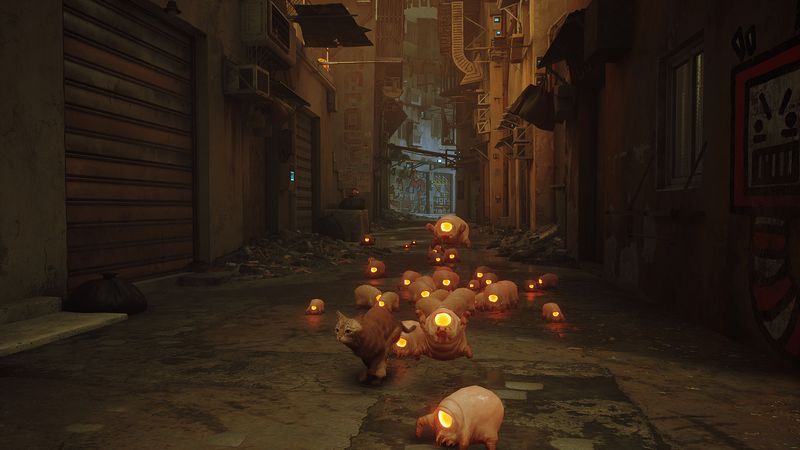
 Stray shines thanks to innovative cat controls and atmospheric world design. From the moment you paw into the city, the movement feels natural—fluid animations, tactile climbing, and context-sensitive prompts give you a strong sense of feline agility without overwhelming complexity. In many ways, BlueTwelve Studio offers a new standard. It balances intuitive mechanics with rich environmental storytelling, creating a game that feels both accessible and layered. It blends charm, challenge, and emotion in a compact package few games match.
Stray shines thanks to innovative cat controls and atmospheric world design. From the moment you paw into the city, the movement feels natural—fluid animations, tactile climbing, and context-sensitive prompts give you a strong sense of feline agility without overwhelming complexity. In many ways, BlueTwelve Studio offers a new standard. It balances intuitive mechanics with rich environmental storytelling, creating a game that feels both accessible and layered. It blends charm, challenge, and emotion in a compact package few games match.
Final Thoughts
 Its open world feels tight and crafted. Rather than overwhelming you with sprawling maps, it focuses on dense, interconnected areas that invite curiosity. You explore at your own pace and still feel driven, thanks to smart breadcrumbing and visual cues that subtly guide you without forcing a path. Each chapter feels distinct but contributes to the overarching story in meaningful ways, with environmental themes shifting alongside your progress and interactions evolving as you advance.
Its open world feels tight and crafted. Rather than overwhelming you with sprawling maps, it focuses on dense, interconnected areas that invite curiosity. You explore at your own pace and still feel driven, thanks to smart breadcrumbing and visual cues that subtly guide you without forcing a path. Each chapter feels distinct but contributes to the overarching story in meaningful ways, with environmental themes shifting alongside your progress and interactions evolving as you advance.
 No detail goes unnoticed. From tiny pipes and graffiti tags to rooftop gardens and hidden ledges, I found goals everywhere. The world responds subtly to your presence—lights flicker, robots react, and new paths emerge as you explore deeper. Exploration feels organic, not checklist-driven, making each playthrough feel different. Whether you’re chasing a hidden memory or just taking in the view, the experience rewards attentiveness and playful experimentation.
No detail goes unnoticed. From tiny pipes and graffiti tags to rooftop gardens and hidden ledges, I found goals everywhere. The world responds subtly to your presence—lights flicker, robots react, and new paths emerge as you explore deeper. Exploration feels organic, not checklist-driven, making each playthrough feel different. Whether you’re chasing a hidden memory or just taking in the view, the experience rewards attentiveness and playful experimentation.
 The level design caters to runners and casual players alike. Those who love relaxed exploration will appreciate the guided pacing and puzzle flow, while speedrunners will find satisfying layers of mastery in movement optimization, route planning, and exploit discovery. Speed and stealth blend wonderfully, offering options rather than mandates. It’s a rare game that respects all skill levels and gives them tools to engage on their terms, whether you’re in it for the story, the aesthetics, or the competitive edge.
The level design caters to runners and casual players alike. Those who love relaxed exploration will appreciate the guided pacing and puzzle flow, while speedrunners will find satisfying layers of mastery in movement optimization, route planning, and exploit discovery. Speed and stealth blend wonderfully, offering options rather than mandates. It’s a rare game that respects all skill levels and gives them tools to engage on their terms, whether you’re in it for the story, the aesthetics, or the competitive edge.
 If you loved Stray, try these games: Journey offers wordless storytelling in a vast desert. Inside blends atmospheric puzzles with dark narrative. Little Nightmares delivers tense platforming in a creepy world. Unravel uses charming physics puzzles and emotional themes. Ghost of Tsushima gives open-world cat-like stealth and samurai action.
If you loved Stray, try these games: Journey offers wordless storytelling in a vast desert. Inside blends atmospheric puzzles with dark narrative. Little Nightmares delivers tense platforming in a creepy world. Unravel uses charming physics puzzles and emotional themes. Ghost of Tsushima gives open-world cat-like stealth and samurai action.

